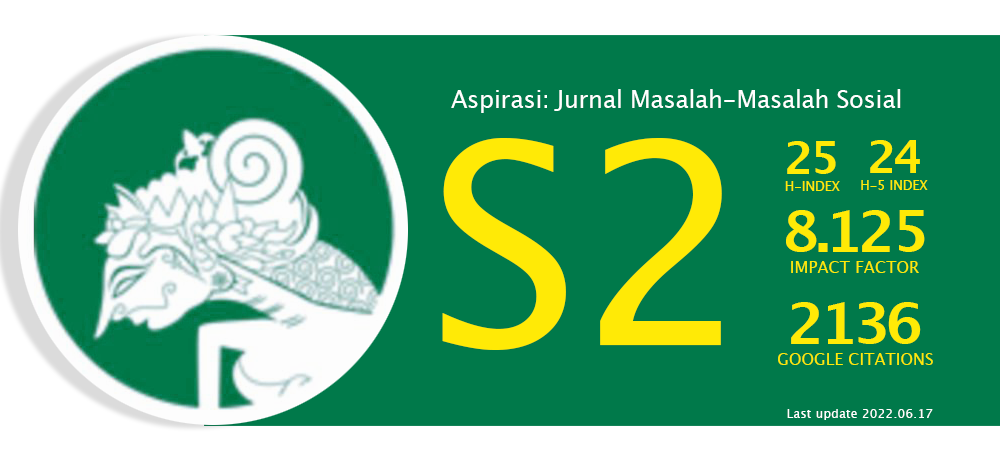PENGARUH PERUBAHAN IKLIM TERHADAP KETERSEDIAAN AIR BAKU PDAM KABUPATEN LEBAK
Abstract
Keywords
Full Text:
UntitledReferences
Buku
Badan Metereologi Klimatologi dan Geofisika (BMKG). 2011. “Evaluasi Cuaca dan Sifat Hujan Bulan Agustus 2011 serta Prakiraan Cuaca dan
Sifat Hujan Bulan September 2011”. Bulletin Metereologi, BMKG Stasiun Metereologi Otorita Batam, Batam.
Badan Penelitian dan Pengembangan Kesehatan (Balitbangkes). 2013. Laporan Riset Kesehatan Dasar 2013, Jakarta.
Badan Pusat Statistik (BPS) Kabupaten Lebak. 2014. Kabupaten Lebak Dalam Angka 2014, Lebak- Banten.
Faqih, Akhmad, Ribbe, Joachim, & Meinke, Holger. 2008. “Assessment of GCM-based Rainfall Simulations for the Austral-Indonesian Region”. Poster Presentation in WMO 4th International Workshop on Monsoons, 20-25 Oct 2008, Beijing, China.
IPCC. 2000. A Special Report of IPCC Working Group III: Emissions Scenarios. Cambridge, U.K: Cambridge University Press.
IPCC. 2001. Climate Change 2001: Synthesis Report. Cambridge, U.K: Cambridge University Press
Kodoati, Robert J. & Sjarief, Roestam. 2008. Pengelolaan Sumber Daya Air Terpadu, Ed. II. Yogyakarta: Penerbit ANDI.
Murdiyarso, Daniel. 2003. Sepuluh Tahun Perjalanan Negosiasi Konvensi Perubahan Iklim. Jakarta: Penerbit Buku Kompas.
PDAM Kabupaten Lebak. 2014. Laporan Hasil Evaluasi Kinerja (UN-AUDIT) PDAM Kabupaten Lebak Tahun 2014, Lebak-Banten.
Pemerintah Daerah Kabupaten Lebak. 2014. Rencana Tata Ruang dan Wilayah (RTRW) Kabupaten Lebak 2014-2034, Lebak-Banten.
Pribadi, Yanuar Henry. 2012. Variabilitas Curah Hujan dan Pergeseran Musim di Wilayah Banten Sehubungan dengan Variasi Suhu Muka Laut Perairan Indonesia, Samudera Pasifik dan
Samudera Hindia, Tesis Program Magister Ilmu Geografi Fakultas Matematika dan Ilmu Pengetahuan Alam, Universitas Indonesia, Depok.
Ravindranath, N. H. & Sathaye, Jayanta A. 2002. Climate Change and Developing Countries, Kluwer Academic Publisher, Netherlands.
Seyhan, E. 1977. Fundamentals of Hydrology, revised edition, Geografisch Instituut der Rijksuniversiteitte Utrecht, Netherlands.
Sukrisna, A. 2004. Peta Cekungan Air Tanah Provinsi Banten Skala 1:250.000, Direktorat Tata Lingkungan Geologi dan Kawasan Pertambangan, Bandung.
Thornthwaite, C. W. & Mather, J. R. 1955. The water balance, Centerton: Drexel Institute of Technology, 104 p. Publ. Climatol. 8.
Tjasjono, Bayong. 1999. Klimatologi umum, Penerbit ITB, Bandung.
Undang-Undang Nomor 7 Tahun 2004 tentang Sumber Daya Air.
Van Bemmelen, R. W. 1949. The Geology of Indonesia, vol. 1A, Martinus, Nijhoff, The Hague.
DOI: https://doi.org/10.46807/aspirasi.v6i1.466
Refbacks
- There are currently no refbacks.







